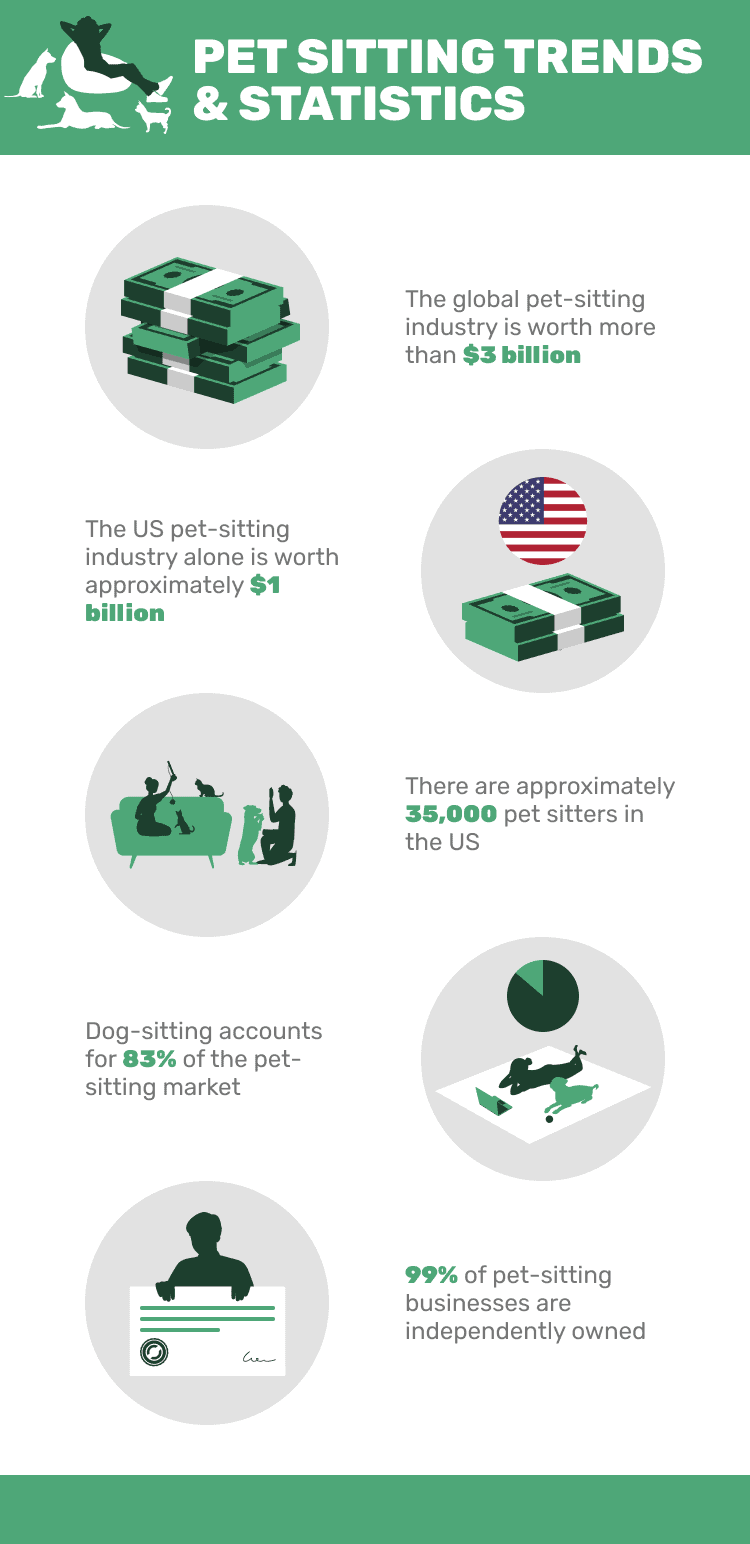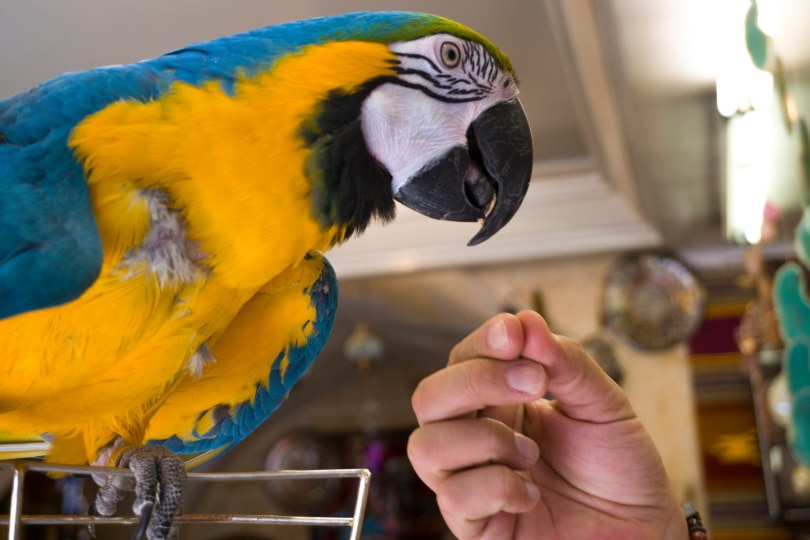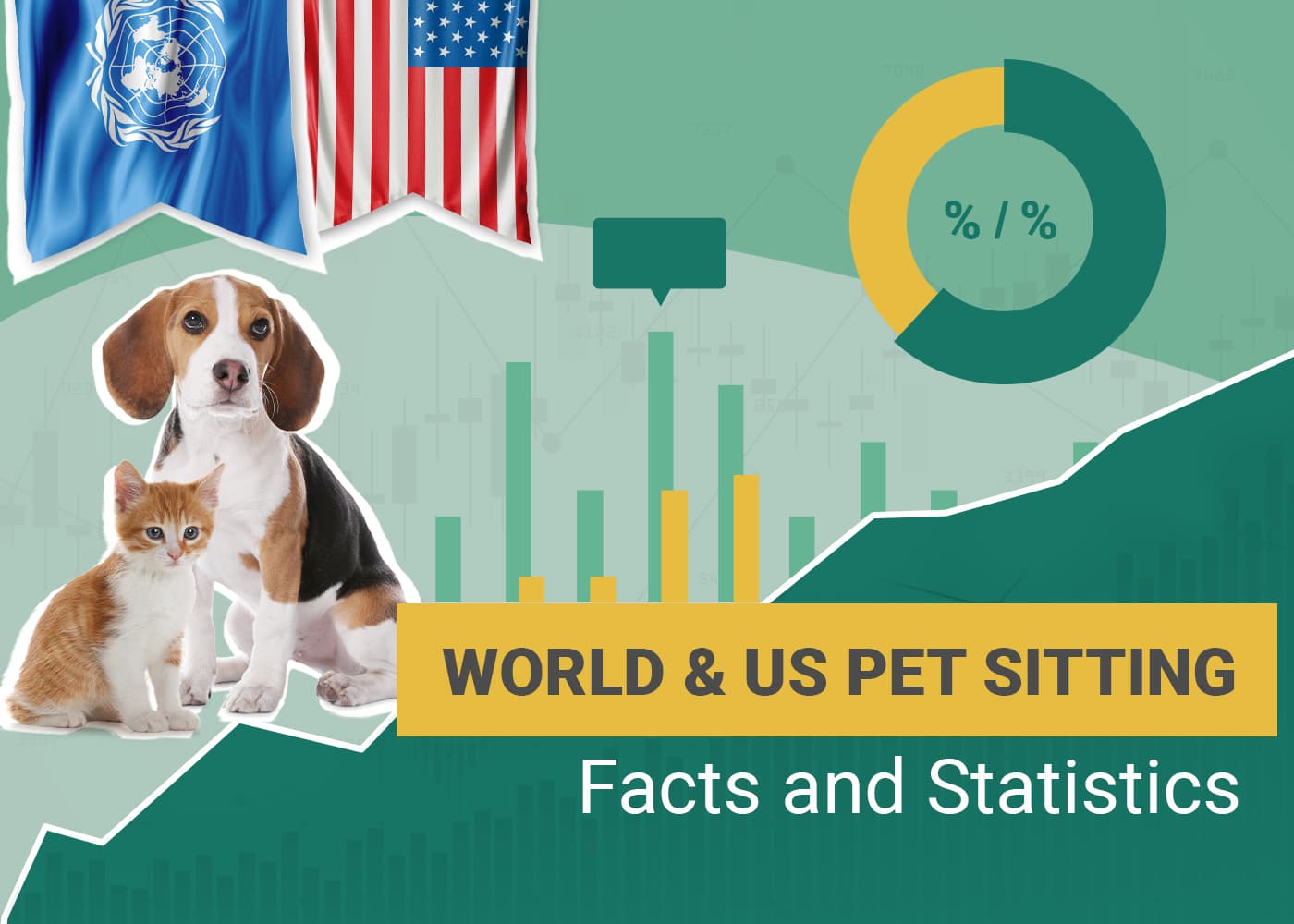In this article
View 3 More +Note: This article’s statistics come from third-party sources and do not represent the opinions of this website.
A pet-sitting service is a company or individual that attends a person’s house or place of residence to care for their pet. Such services may be used when the owner goes on holiday or are away for a night, but dog walking may also be considered a form of pet sitting and this type of service is commonly used by people that go out to work and want to ensure that their dog gets the required exercise. Although pet-sitting services are most commonly used by dog owners, services are available for a wide range of pets including cats, birds, fish, and even exotics. And, while pet sitting is available in countries around the world, North America has the single biggest market and accounts for approximately a third of the world’s pet-sitting market.
Below, we have highlighted 15 pet-sitting statistics including details on the market size as well as recent and forecasted future trends.

Top 15 Pet Sitting Statistics
- There are 77 million dogs, 58 million cats, and 8 million birds in the U.S. alone.
- Americans spent more than $120 billion on their pets in 2021.
- The global pet-sitting industry was worth $2.4 billion in 2022.
- North America accounts for more than a third of the global market.
- The global pet-sitting market is estimated to be worth close to $6.4 billion by 2032.
- There are approximately 35,000 pet sitters in the U.S.
- Pet sitting saw a significant decline during the Covid years.
- The continuation of back-to-office trends will see the pet-sitting industry rise by 11% per annum.
- Dog-sitting accounts for 83% of the pet-sitting market.
- More than three-quarters of pet sitters are women.
- Pet sitting costs an average of $25 for a 30-minute visit and $80 for overnight sitting.
- 99% of pet-sitting businesses are independently owned.
- The average gross revenue for a pet sitter is approximately $70,000 per annum.
- The average pet sitter salary is $25,000 per annum.
- Pet sitters in Connecticut earn more than those anywhere else in the country.

US Pets
1. There are 77 million dogs, 58 million cats, and 8 million birds in the U.S. alone.
(AVMA)
The US’s 330 million people own approximately 77 million dogs, 58 million cats, and 8 million birds as well as millions of fish, exotics, and other pets. While not all owners will need regular pet-sitting services, this does represent a significant potential market for pet-sitting professionals and businesses.

2. Americans spent more than $120 billion on their pets in 2021.
(Freedonia Group)
Americans aren’t afraid of spending money on their pets, either. In 2021, US citizens spent more than $120 billion on their pets, which amounts to nearly $1,000 per pet per annum. This figure does include all pet expenditures, however, so it includes pet food and toys, vet and pet insurance bills, and pet sitting and other services.

The Pet Sitting Industry
3. The global pet-sitting industry was worth $2.4 billion in 2022..
(Market.us)
Countries across the world love their pets and seeing that the global pet-sitting industry is worth an estimated $2.4 billion is a testament to this fact. Other major pet-sitting regions include Europe, in particular Germany, France, and the UK, as well as other continents. Pet sitting industry statistics do include dog walking. Many dog walkers will put out food and water for the dogs during their visit, but even so, walking a dog can be considered pet sitting because the walker is providing care for the pet.

4. North America accounts for more than a third of the global market.
(The Brainy Insights)
While there are other significant pet-sitting markets and regions, North America is the single biggest market and accounts for 41.72% of the total global market. The drivers in the market dynamics for this region include people going back to their busy schedules after the COVID-19 lockdowns and restrictions and wanting their pets to be taken care at home instead of a shelter when they are away.
5. The global pet-sitting market is estimated to be worth close to $6.4 billion by 2032.
(Market.us)
The majority of reports show upward trends in the pet industry. While pet ownership has had a few dips in percentage over the past decade, reports estimate that the pet sitting industry will grow at a CAGR of 10.50%. Should things continue this trajectory, the global pet sitting market is estimated to be worth almost around $6.4 billion by 2032.

6. There are approximately 35,000 pet sitters in the U.S.
(Zippia 1)
Most pet sitters work independently and offer their services on a self-employed basis, although there are a few businesses, including some franchised businesses, that also offer these services. There is no register for pet sitters, which means that we can only rely on estimates to gauge the number of professional pet sitters in operation. There are estimated to be 35,000 pet sitters in the U.S.
Trends and Specifics
7. Pet sitting saw a significant decline during the Covid years.
(Grand View Research)
Covid was a difficult time for everybody, although pets did benefit in some respects. Many people found themselves at home during the day, rather than going to work, and a lot of people turned to their pets for comfort and companionship. While this may have benefited the pets themselves, it led to a considerable decline in the services offered by pet sitters, most of whom were bound by the same lockdowns as those that would typically use them.

8. The continuation of back-to-office trends will see the pet-sitting industry rise by 11% per annum.
(Grand View Research)
Since Covid lockdowns have ended and people have gone back to work, the pet-sitting industry has rebounded and because so many people bought new pets during Covid, pet-sitting demand is expected to boom. The use of these services is expected to rise by 11% annually until 2030, which will see the industry potentially double in the next 7 years.
9. Dog-sitting accounts for 83% of the pet-sitting market.
(Grand View Research)
Pet sitting is available for all types of pets, from fish to cats and dogs, but because they require more one-on-one care, it is dogs that account for the greatest share of the pet sitting market. 83% of all pet sitting jobs are dog sitting. This is likely because dog walking services are considered a type of pet sitting. Other animals, like cats and fish, do not need regular walking.

10. More than three-quarters of pet sitters are women.
(Zippia 1)
When it comes to the professionals that offer pet sitting services, more than 75% of them are women and the average age of a pet sitter is just over 30.
11. Pet sitting costs an average of $25 for a 30-minute visit and $80 for overnight sitting.
(Thumbtack)
The cost of pet sitting varies according to the type of service, whether any specialist services are required, and how long it takes. General well-being visits mean cleaning out litter trays, putting down food and water, and letting the dog out in the yard to toilet. A service like this usually takes 30 minutes and costs an average of $25, although this does vary according to service and location. Overnight pet sitting may also be needed when the owner goes away or if they are taken into hospital. These services usually cost around $80 per night.


Revenue and Earnings
12. 99% of pet-sitting businesses are independently owned.
(Petsit)
The vast majority of the pet-sitting industry is made up of independent professionals, rather than businesses and groups. In fact, 99% of businesses are independently owned.
13. The average gross revenue for a pet sitter is approximately $70,000 per annum.
(Petsit)
It is possible to make a good living as a pet sitter, especially for those sitters that can attract regular and repeat business. The average revenue earned by a pet sitter or pet sitting business is $70,000 gross per annum.

14. The average pet sitter salary is $25,000 per annum.
(Zippia 2)
While there aren’t many businesses that employ pet sitters, some do. Working for a pet-sitting business will earn an average of $25,000 per annum.
15. Pet sitters in Connecticut earn more than those anywhere else in the country.
(Zippia 2)
Pet sitters work across the whole of the country, and rates do vary according to the location and availability of sitters. Rates in cities tend to be higher than those in rural areas, and it is Connecticut that has the highest rates. Subsequently, pet sitters in Connecticut also have the highest average annual earnings.

Frequently Asked Questions
Is there a demand for pet sitters?
There is a demand for pet sitters, and as more people are returning to the office and to work, demand continues to increase. Experts expect the market to grow at a rate of up to 11% per annum over the next 7 years, which represents a significant increase in demand and significant demand for this type of service.
How profitable is a dog-sitting business?
There aren’t too many overheads associated with a dog-sitting business. You will need to pay for transport to and from the sitting jobs, and it is a good idea to have pet-sitting insurance, but other running costs are minimal. With some groups reporting that pet sitters generate an average revenue of up to $80,000 per annum, this means that there is good potential for profit-making, especially as you build up a client base and benefit from repeat business.
What are the duties of a pet sitter?
A pet sitter is expected to provide general care for the pets under their charge. Exactly what this entails will depend on the pet in question and also what the pet sitter is willing to do. The most common services include dog walking, changing cat litter, and putting food and water down. The sitter may also be asked to administer medication and even take the pet to vet visits. For overnight stays, a major part of the service is simply companionship.

Final Thoughts
Pet sitting is a vital service for pet owners that need to go out to work or that go away on holiday or for other purposes. Since Covid lockdowns have ended, demand has risen sharply, and this is expected to continue in the coming years. Currently, the market is worth an estimated $3 billion globally and $1 billion in the U.S. alone.
Featured Image Credit: Dora Zett, Shutterstock





















